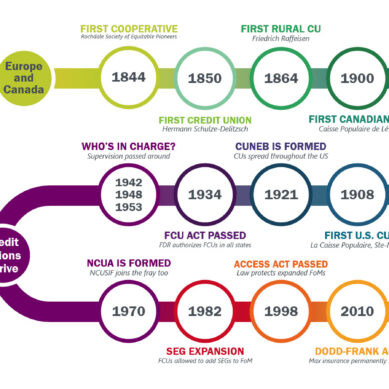In a May 2022 hearing of the United States Senate Subcommittee on Financial Institutions and Consumer Protection, committee members met to discuss the topic of overdraft fees and their effects on working families. During the hearing the topic of Bank On accounts and how they help consumers was brought up. But what exactly are these Bank On accounts that are now offered across the country?
The history of Bank On
The Bank On platform was launched by the Cities for Financial Empowerment Fund (CFE Fund), a non-profit whose mission is “to leverage municipal engagement to improve the financial stability of low and moderate-income households by embedding financial empowerment strategies into local government infrastructure.”
The CFE Fund discovered that a substantial number of U.S. households were either unbanked or underbanked, and a big part of that reason was a lack of affordable financial services, especially for low-income households. As Senator Raphael Warnock (D-GA) stressed, the prevalence of “onerous” overdraft fees and policies was keeping those families from joining the financial services sector.
Unfortunately, without a basic transaction account, many households turn to expensive and predatory alternative solutions, like pay day lenders, check cashers, and the like. But if financial institutions’ overdraft policies turn out to be just as harmful, where are they to turn?
The CFE Fund found the need for a national standard for transactional accounts with an emphasis on affordability and user-friendliness for even the lowest income of households. Working with the Bank On National Advisory Board, the two parties worked to develop the Bank On National Account Standards.
Financial institutions with savings and checking accounts that meet those Standards can apply for a national certification. As the program grows in recognition and prestige, more banks and credit unions are seeking out the certification. As of March 2022, the CFE Fund announced that more than two hundred Bank On certified accounts had been implemented across the country.
National standards for Bank On accounts
The standards for a savings or checking product to be considered Bank On certified can be summed up with one word: free.
The published standards detail required core features, customer service, and functionality. For example, Bank On accounts cannot have overdraft or NSF fees (hence why they were touted during the hearing). Nor can they have account activation, closure, dormancy, inactivity, or low balance fees.
For fees that are allowable (out-of-network ATM, monthly maintenance fee, printed statement fee, etc.), the CFE puts limitations on when they can be charged and how high those fees can be. For example, if bill pay is available from the institution, it must be provided for free, otherwise the bank or credit union must provide at least four free cashier checks and/or money orders per month. Monthly maintenance fees must be $5 if not waivable, or $10 or less if waivable with a single transaction (e.g. direct deposit, bill pay, or debit card purchase).
The standard also includes strongly recommended features, such as only denying access to the accounts in instances of actual historical fraud or offering credit-building products like secured loans and credit cards. The full list of national account standards is available online.
If you are looking at these standards and thinking “our checking account fits this bill already!” then you can submit that account for certification for free via the Bank On website.
Benefits credit unions can expect by offering a certified Bank On product
Bank On and the CFE Fund cite three areas that banks and credit unions can benefit by offering these accounts: community opportunities, sustainable consumer base, and Community Reinvestment Act (CRA) credits.
As far as community opportunities, credit unions benefit through the recognition of offering these products, putting them in touch with local programs seeking to connect consumers with affordable and safe financial services. The credit unions can in turn use the earned seal to market their efforts—though as a program in its relative infancy, its meaning may be lost on households.
The sustainable consumer base benefit overlaps a bit, suggesting by offering these products, the credit union will have better access to un- and underbanked customers, and be able to bring them into the mainstream. By connecting eligible accounts with local Bank On coalitions, credit unions may indeed see an influx of potential new members.
A growing trend
Per The Bank On National Data Hub: Findings from 2020 report, “3.8 million accounts were open and active in 2020, representing about 80% of U.S. ZIP codes, and that 82% of Bank On accounts opened in 2020—more than 4 out of 5 accounts—were opened by customers who were new to the financial institution.”
In March 2022, Bank On announced that the count of available accounts had doubled over the previous eight-month period. Just two months later, another thirty-seven available accounts were added.
As the CFPB, regulators, and Congress put more pressure on financial institutions to offer affordable and safe banking options for American consumers, the appeal of the Bank On account will grow. While plainly beneficial for un- and underbanked households, whether it is the right choice for credit unions to offer is ultimately up to them.
























































